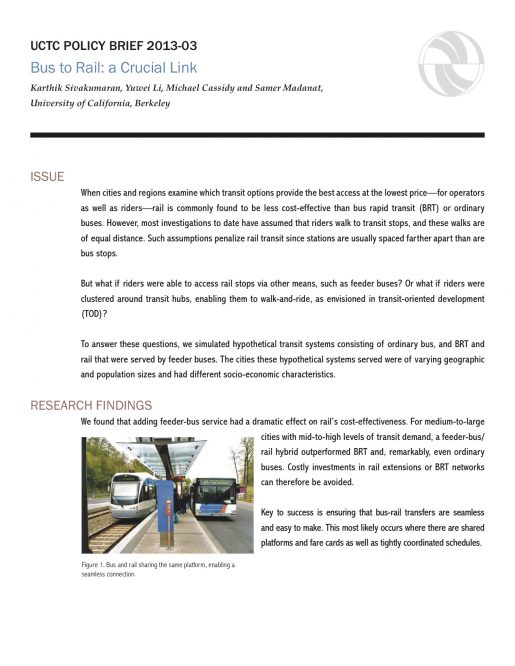Bus to Rail: a Crucial Link
UCTC Policy Brief 2013-03: When cities and regions examine which transit options provide the best access at the lowest price—for operators as well as riders—rail is commonly found to be less cost-effective than bus rapid transit (BRT) or ordinary buses. However, most investigations to date have assumed that riders walk to transit stops, and these walks are of equal distance. Such assumptions penalize rail transit since stations are usually spaced farther apart than are bus stops. But what if riders were able to access rail stops via other means, such as feeder buses? Or what if riders were clustered around transit hubs, enabling them to walk-and-ride, as envisioned in transit-oriented development (TOD)? To answer these questions, we simulated hypothetical transit systems consisting of ordinary bus, and BRT and rail that were served by feeder buses. The cities these hypothetical systems served were of varying geographic and population sizes and had different socio-economic characteristics.
